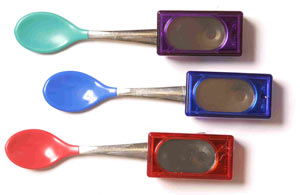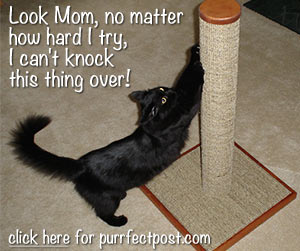Clicker Training for Cats: An Overview

While there are many ways to train dogs, there are far fewer ways to train cats because they endeavor to escape anything that doesn't directly benefit them. In order to ensure that your cat want to learn, the best means is clicker training. This type of training uses positive reinforcement, teaching cats how to learn in a way that bridges the communication gap between felines and humans.
How Clicker Training Works
Clicker training uses rewards as motivation for your cat to learn. Cats are often highly motivated by food and play. Making a specific sound, such as a click, when your cat does something you want, and pairing it with his favorite treat will make the cat wish to repeat that behavior because it was rewarding.
The click sound is called a bridging signal. It lets your cat know that he performed something treat-worthy. This will make him wish to repeat the behavior to earn another treat. Because you cannot offer the treat as fast as your cat can perform the action, the click gives him the information he needs to ascertain that the treat is on the way. The timing of the click is very important, especially with cats, as they offer behavior very quickly and expect their rewards in short order.
Click Means Treat
Before you can begin working with your cat you need to teach him the meaning of the click sound. Here is a simple procedure to teach this concept:
- Discover what motivates your cat. Is it tuna? Cat treats? Canned food? Wand toys? Once you find out what maintains his attention, you can use it with clicker training.
- Hold a clicker in one hand and the reward on a spoon (if you are using a toy, be sure the toy is on a string so that your cat doesn't accidentally nick you with his claw). Click the clicker, give him the reward.
- Repeat this 3-5 times or until your cat instantly perks up, expecting his reward at the sound of the click.

Target Training
Now that your cat understands the meaning of the clicker you should next teach him about target training. This is extremely important with a cat because you don't want to give food rewards with your hands. While most dogs take treats gently, cats often do not.
You can make a target stick out of a wooden spoon, baby spoon or a thin dowel rod. Tape your clicker to one end and a spoon on the other end. Baby spoons work wonderfully because of their long handle and small spoon.

Simple Procedures for Teaching Your Cat How to Target:
- Put some canned cat food or a mushed treat (so it has traction) on the spoon.
- Show your cat the treat filled spoon.
- As your cat goes to eat the food, click and then allow him to eat a bit.
- Repeat 3-5 times and your cat is certain to understand that following the spoon is rewarding.
- Move the spoon left or right. When your cat follows the spoon, click and allow him to eat some of the food in the spoon.
Now you can use this spoon as your cat's target, enabling a full spectrum of teaching him new behavior with clicker training.
You May Also Like These Articles:
Clicker Training for Cats: Sit
Clicker Training for Cats: Come When Called
Training Your Cat To Let You Sleep
Training Your Cat To Stay Off The Kitchen Counter
Notice: Ask-a-Vet is an affiliated service for those who wish to speak with a veterinary professional about their pet's specific condition. Initially, a bot will ask questions to determine the general nature of your concern. Then, you will be transferred to a human. There is a charge for the service if you choose to connect to a veterinarian. Ask-a-Vet is not manned by the staff or owners of CatHealth.com, and the advice given should not delay or replace a visit to your veterinarian.





